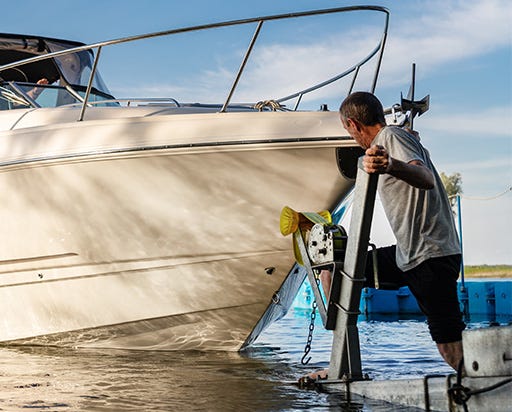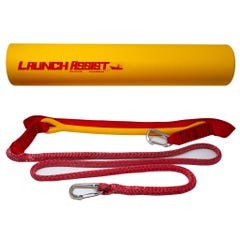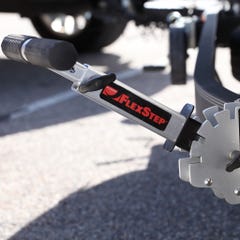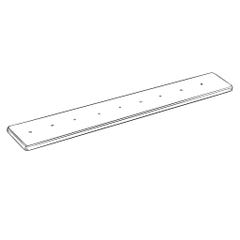How to Launch Your Boat Solo
June 09, 2022 6 min read


Let’s go out on a limb: it won’t be a solo boater with a practiced launching routine who grinds your local ramp to a halt this Saturday morning. By and large, people who launch single-handedly on a regular basis tend to be quick, smooth and courteous. But they didn’t get that way without some trial and error.
Contents
How to Launch Your Boat Solo
The most obvious difference between launching on your own and launching with help is that when you’re alone, you have two things that need to be moved — your boat and your tow rig — and you can only move one of them at a time. That means that even the most efficient solo launch will take longer than a smooth launch with help. But if you prep to launch before getting in line, stay in your lane, and work efficiently, you can more than offset the couple of extra minutes you need to move a vehicle.
Almost any trailerable boat can be launched solo with the right gear and preparations. The smaller the boat, though, the easier the process. Boats larger than around 25 feet are difficult to control with only bow and stern lines by a single person on the dock, which means they must be driven off the trailer under power. Somewhere around 25 feet is also where it becomes very difficult or impossible to climb aboard over the bow without a ladder of some kind. With a trailer-mounted ladder, though, you can launch just about anything you can fit on a trailer.
Extra Caution
Launching solo requires a little extra caution in keeping your boat under control as you back down the ramp, move your boat from trailer to dock and leave it unattended at the dock.
It also requires that you get your feet wet. Not every time — a lane adjacent the dock on a steeper ramp is the best shot at a dry-foot launch and load — but on flatter ramps, and especially if you are driving your boat on or off the trailer, you are likely to have to get in the water. A pair of 12-inch deck boots are handy for colder season launches.
A common approach is to line the boat off the trailer


There are two approaches to dropping your boat in the water: driving it off the trailer and piloting to the dock, or lining the boat from the trailer to the dock. A common approach is to line the boat off the trailer and drive it back on, and it is a good idea to be comfortable doing either, as circumstances dictate. If you launch on a multi-lane ramp at a busy time, you can’t gamble on drawing a lane with a port-side dock.
Lining Your Boat Off the Trailer
To line your boat off the trailer, you will need to keep it tethered to your tow rig while backing down. An adequately long dock line will do the job. Just remember that it needs to be long enough to let your boat float free from the trailer and clear the guides. Generally, the same cleat where you connect your bow dock line is a good choice for this purpose, but the bow eye is also an option.
Regardless, do not detach the winch strap until the trailer tires are in the water. Boats can and do slip off trailers on the ramp. Just get out of the tow vehicle once the trailer tires are in the water and unclip the strap.
Make the aft dock line fast to a cleat and lay it on the deck so that it reaches toward the bow and will be accessible from the dock.
There are three options for staying connected to the boat with the dock line. In all of them, you should avoid knotting the dock line to your rig in any way that could be tricky to untie. A loop in the end of the line or a carabiner can facilitate a quick release.
Your best bet is to use the Launch Assist - Boat Launch Support System, this will make the line management a breeze! And allow you to easily keep your boat in control when launching it solo.
A second way is to connect to a tie-down point on the vehicle. Carabiners come in handy here for clipping to something in the bed of a pickup or an open rear hatch. Coil slack line in your tailgate.
A third option — which gives you the best chance of keeping your feet dry — is to run the line to the driver’s side window, pass it into the cab, and hold the excess line in hand while backing the trailer into the water. Back down slowly enough to gently slide the boat off the trailer, allowing the line to pay out as the boat takes it.
Docking
On very flat ramps in cold water, you may want to pull forward, up the ramp, to exit your vehicle in shallower water, if not on dry ground. Once the boat is off the trailer’s bunks and has drifted sufficiently clear, ease the vehicle forward gently (to avoid creating a current that can pull the boat back toward the trailer) until you can step out. Keep a close eye on the line attached to the bow, though; you don’t want to let it come tight and pull the boat back toward the trailer.
Set the parking brake and exit the vehicle as the boat floats backward. Pass the coil of slack line to yourself through the window or unconnect and gather it up, as the case may be. Moving to the dock, use the line to bring the boat over, and grab the pre-positioned aft dock line. You should now have adequate control of your boat to move down the dock and tie off. Or, if you need to pilot around other craft to dock, you can get aboard or proceed.
Set the parking brake and exit the vehicle as the boat floats backward.
Because your boat will be there for a few minutes while you park your tow rig, consider taking an extra moment to tie up well out of the way of others using the ramp.
Unavoidably, your boat is going to sit unattended at the dock during both launching and loading. When loading on a busy summer weekend, you may spend a while waiting your turn to get back on the ramp. Apart from being mindful of the security of valuable gear and personal items, make sure your dock lines are well secured, along with anything that could be disturbed by wave action or unexpected contact from another boat.
Driving Off the Trailer
Driving your boat off the trailer instead of lining it off means you’re in full control of the boat the whole time, which is preferable when a strong wind or current is present A wind blowing onshore or a current or wind perpendicular to the ramp can quickly push a boat that is tethered only at the bow sideways, making it impossible to reach your aft dock line and difficult to control with only a line on the bow.
There are a couple of downsides. First, driving off the trailer means you’ll almost certainly get your feet wet as you walk to the trailer tongue. Second, although climbing aboard over the bow is usually easy enough on bass, flats, bay and other low-profile boats, it can be dicey on boats with higher bows. Add in complicating factors like darkness, wet feet or a line of impatient boaters behind you and it can get dangerous. Trailer-mounted ladders are very helpful, but even a simple household ladder or step stool can work.
The main thing to keep in mind when solo launching this way is that you’ll still have to secure the boat to the trailer as a safety measure in case it somehow floats free before you’re aboard. Again, you should never detach the winch strap before the trailer tires are in the water, so in most cases the strap can also serve to keep your boat from floating away. If you want to let your boat slide back a little ways on the trailer as you back in, simply pay a few feet of strap off your winch and then re-engage it.
Pick Your Spot
That’s the launch, and one thing to keep in mind is that you have more control over the conditions you launch in than you do over the conditions you load in. You can always choose not to launch. Once you’ve launched, though, you will have to load eventually — and there will come a time when the weather is telling you, along with dozens of other boaters, to do it now.
The best way to deal with a rush to get off the water is to avoid it in the first place. If conditions are expected to deteriorate, the prudent call is to beat the rush at the ramp. Anticipate or wait.
The prudent call is to beat the rush at the ramp.
You may need to pick your spots if you boat on busy waters. You may decide it’s best to never venture solo to the busiest local ramp at the busiest local time without a mate. As an owner of a trailered watercraft, you are more likely to launch on one or a few familiar waters regularly than for every launch to be a novel experience. The familiarity of your home ramp will help you fine tune your solo launching and loading routine, which will help you deal with new launches or new conditions at your favorite waters.
Ultimately, there should be few situations in which you aren’t as comfortable getting on and off the water solo as you would be with help. Give yourself a few practice sessions in light traffic and calm weather and you will be on your way to launching confidently whether your buddy is showing up this Saturday, or golfing.





